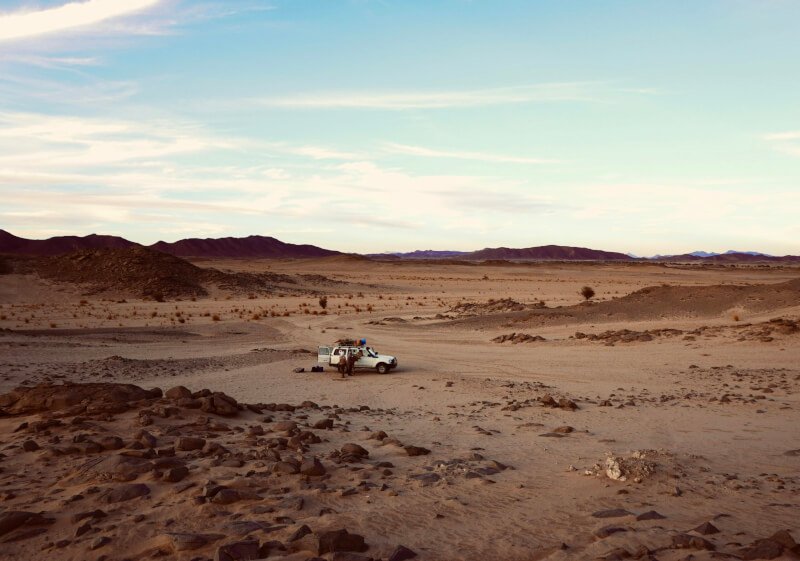Imagine escaping the hustle and bustle of everyday life and immersing yourself in the beauty of nature. With “Camping and Wilderness Survival,” you can learn valuable skills that will not only allow you to survive in the wild but also enhance your camping experience. From building a shelter to finding food and water, this article will provide you with essential tips and tricks to navigate the wilderness like a pro. So pack your bags, embrace the thrill of the unknown, and get ready to embark on an unforgettable adventure.
Camping and Wilderness Survival
Welcome to the world of camping and wilderness survival! Whether you’re a seasoned outdoor enthusiast or a beginner looking to embark on your first adventure, this comprehensive guide will provide you with all the information you need to make your camping trip a success. From choosing the right campsite to navigating in the wilderness, finding and purifying water, and even dealing with wildlife, we’ve got you covered. So grab your gear and get ready for an unforgettable experience in the great outdoors!
Choosing the Right Campsite
Choosing the right campsite is crucial for an enjoyable and safe camping experience. Before you head out, take some time to consider the following factors:
Conditions for a Good Campsite
A good campsite is one that meets your specific needs and preferences. Think about the kind of environment you want to be in. Do you prefer a secluded spot or a more popular campground with amenities? Consider the weather conditions as well – if you’re camping in the summer, you may want a site with shade, while winter camping might require a spot that gets plenty of sunlight.
Accessibility
When choosing a campsite, accessibility is an important factor to consider. How far are you willing to travel to reach your destination? If you have limited mobility or are camping with young children, you may want to choose a campsite that is easily accessible by car.
Terrain and Shelter
The terrain and shelter offered by a campsite can greatly impact your camping experience. Look for a site that is relatively flat and free of hazards such as falling trees or rocks. If you’re camping during colder months, you may want to choose a site with natural windbreaks like trees or bushes to help block the wind.
Water Source
Access to clean water is essential when camping. Look for a campsite that is near a water source such as a river, lake, or stream. This will not only provide you with a source of drinking water but also make tasks like cooking and cleaning easier.
Safety Considerations
Safety should always be a top priority when choosing a campsite. Look for an area that is away from potential hazards like cliffs, loose soil, or areas prone to flooding. It’s also a good idea to choose a campsite that is visible from nearby trails or roads, as this will make it easier for others to find you in case of an emergency.

Essential Camping Gear
Having the right camping gear is essential for a comfortable and enjoyable camping trip. Here are some of the must-have items you should pack:
Tent and Sleeping Equipment
A good-quality tent is essential for a good night’s sleep in the wilderness. Look for a tent that is durable, waterproof, and spacious enough to accommodate you and your fellow campers. Don’t forget to pack sleeping bags, sleeping pads, and pillows to ensure a comfortable night’s sleep.
Cooking Supplies
Cooking supplies are another essential item to pack for your camping trip. A portable camping stove or grill, along with a set of camping cookware, will allow you to prepare delicious meals while enjoying the great outdoors. Don’t forget to bring a cooler or food storage containers to keep your perishable items fresh.
Lighting
Proper lighting is essential when camping, especially during the nighttime. Pack a combination of flashlights, headlamps, and lanterns to ensure you have enough light to navigate around your campsite and feel safe. Don’t forget to bring extra batteries to avoid running out of power.
Clothing and Footwear
Proper clothing and footwear are essential for comfort and safety in the wilderness. Pack layers of clothing to accommodate changing weather conditions, including a waterproof jacket and sturdy hiking boots. Don’t forget to pack extra socks and a hat to protect yourself from the elements.
Personal Hygiene Essentials
Maintaining personal hygiene in the wilderness is important for your health and well-being. Pack essentials such as biodegradable soap, toothbrushes, toothpaste, hand sanitizer, and toilet paper. It’s also a good idea to bring a portable camping shower or wet wipes for quick clean-ups.
Preparing for the Trip
Proper preparation is key to a successful camping trip. Here are some steps to ensure you’re well-prepared before heading out:
Researching the Destination
Before embarking on your camping trip, take some time to research your destination. Familiarize yourself with the local weather conditions, wildlife, and any regulations or permits needed for camping in the area. This will help you plan accordingly and ensure a smooth and enjoyable trip.
Creating a Packing List
Creating a packing list is essential for ensuring you don’t forget any important items. Make a list of all the gear, food, clothing, and personal items you’ll need for your trip. Double-check the list before you leave to ensure you have everything you need and avoid any last-minute scrambling.
Choosing the Right Clothing
Choosing the right clothing is essential for staying comfortable in the wilderness. Check the weather forecast and pack appropriate clothing layers to accommodate the expected temperature changes. Be prepared for both hot and cold weather, as temperatures can vary significantly in the wilderness.
Food and Water Planning
Planning your food and water supply is crucial for a successful camping trip. Calculate the amount of food and water you’ll need for the duration of your trip and pack accordingly. Consider bringing non-perishable food items and a water filtration system to ensure a clean and safe drinking water supply.
Emergency Preparedness
While we always hope for the best, it’s important to be prepared for emergencies when camping. Pack a first aid kit, an emergency whistle, and a map of the area. Familiarize yourself with basic first aid procedures and make sure someone knows your itinerary and expected return date.

Setting Up Camp
Setting up camp is an exciting part of the camping experience. Here’s what you need to know to set up camp like a pro:
Selecting a Tent Site
Choosing the right tent site is crucial for a comfortable and enjoyable camping experience. Look for an area that is relatively flat and free of hazards such as rocks and tree roots. Clear away any debris or vegetation that may interfere with your tent setup.
Pitching a Tent
Pitching a tent may seem daunting, especially if you’re new to camping. Follow the instructions provided with your tent and practice setting it up before your trip. Make sure the tent is secure and properly staked to withstand wind and rain.
Organizing Campsite
Keeping your campsite organized is essential for staying comfortable and preventing accidents. Set up designated areas for cooking, eating, sleeping, and storing gear. Keep food stored securely to prevent wildlife encounters and dispose of trash properly.
Campsite Maintenance
Maintaining your campsite is not only important for your comfort but also for the environment. Follow the “Leave No Trace” principles and leave your campsite in better condition than you found it. Always pack out your trash and dispose of waste properly.
Fire Making and Campfire Cooking
Building a fire and cooking over campfire are integral parts of the camping experience. Here’s what you need to know:
Choosing a Campfire Site
When choosing a campfire site, look for a level area away from any flammable materials such as dry grass or overhanging branches. Clear away any debris and make sure there is sufficient airflow to prevent the fire from spreading.
Gathering Firewood
Gathering firewood is an essential part of building a campfire. Look for dead branches and fallen logs that are no thicker than your forearm. Avoid cutting live trees or damaging live vegetation.
Building a Fire
Building a fire requires careful planning and execution. Start by creating a fire pit, using rocks or a fire pan to contain the flames. Gather tinder, kindling, and firewood in different sizes, ensuring they are dry and easily ignitable.
Fire Safety
Fire safety is of utmost importance when camping. Never leave a fire unattended and always ensure it is completely extinguished before leaving your campsite. Keep a bucket of water or a fire extinguisher nearby in case of emergencies.
Campfire Cooking Techniques
Campfire cooking is a fun and rewarding way to enjoy meals in the great outdoors. Pack a portable grill or grate to place over the flames. Use aluminum foil to cook vegetables, fish, or other delicate items. Remember to bring appropriate cooking utensils and practice safe food handling techniques.

Navigating in the Wilderness
Navigating in the wilderness can be challenging, but with the right tools and knowledge, you can confidently explore the great outdoors. Here are some essential tips:
Map and Compass Basics
Carry a map and compass with you to navigate the wilderness. Learn how to read a map and understand common symbols. Practice using a compass to determine directions and orient yourself. This will help you find your way even in unfamiliar terrain.
Using GPS Devices
GPS devices can be a valuable tool for navigation in the wilderness. Familiarize yourself with the basic functions and features of your GPS device before your trip. Always carry spare batteries or a portable charger to ensure your device stays powered.
Reading Topographic Maps
Topographic maps provide detailed information about elevation changes, contours, and terrain features. Learn how to read topographic maps to better understand the lay of the land and plan your routes accordingly. Pay attention to landmarks, water sources, and potential hazards indicated on the map.
Trail Markers and Navigation Aids
When exploring trails, keep an eye out for markers and navigation aids. These can include signs, cairns, blazes, or rock formations that indicate the correct path. If you encounter unfamiliar markers, refer to your map or ask fellow hikers for guidance.
Finding and Purifying Water
Access to clean water is crucial for survival in the wilderness. Here’s what you need to know about finding and purifying water:
Identifying Water Sources
Identifying reliable water sources is essential when camping. Look for natural water sources such as rivers, lakes, or streams. Avoid stagnant or shallow water, as they may contain contaminants or bacteria.
Water Collection and Filtration
Collecting water safely is crucial to prevent contamination. Use a clean container or water filtration system to collect and filter water. If using a filtration system, ensure it is rated to remove bacteria and parasites commonly found in wilderness water sources.
Water Purification Methods
To ensure the water you collect is safe to drink, consider using additional water purification methods. Boiling water for at least one minute will kill most bacteria and parasites. Chemical water treatments, such as chlorine or iodine tablets, can also be effective.

Wilderness First Aid
Being prepared for emergencies and knowing basic first aid can be life-saving in the wilderness. Here are some essential tips:
First Aid Kit Essentials
A well-stocked first aid kit is a must-have for any camping trip. Pack items such as bandages, adhesive tape, antiseptic wipes, pain relievers, and any necessary prescription medications. Familiarize yourself with the contents of your first aid kit and learn how to use them effectively.
Common Wilderness Injuries
Being aware of common wilderness injuries can help you prevent or properly respond to them. These can include cuts and scrapes, sprains, burns, insect bites, and allergic reactions. Knowing how to recognize and treat these injuries can make a significant difference in the outcome.
Emergency Wound Care
If someone in your group sustains a serious wound, proper wound care is essential. Clean the wound with clean water or an antiseptic solution and apply direct pressure to stop bleeding. Use sterile dressings or clean cloth to cover the wound and seek medical help if necessary.
Heatstroke and Hypothermia
Extreme temperatures can pose serious risks in the wilderness. Heatstroke and hypothermia are two conditions to watch out for. Learn how to recognize the signs and symptoms of heatstroke and hypothermia and take appropriate steps to prevent or treat these conditions.
Dealing with Wildlife
Encounters with wildlife can be both thrilling and potentially dangerous. Here’s how to handle wildlife encounters responsibly:
Wildlife Awareness
Being aware of the wildlife in your camping area is crucial for your safety and the well-being of the animals. Research the local wildlife and learn about their behavior and habits. This will help you understand how to coexist with wildlife and minimize potential conflicts.
Keeping a Respectful Distance
When encountering wildlife, it’s important to keep a respectful distance. Admire animals from afar and avoid approaching or feeding them. Respect their natural habitat and avoid interfering with their behavior.
Proper Food Storage
Proper food storage is essential for preventing wildlife encounters at your campsite. Store your food and garbage in bear-resistant containers or hang them from a tree in a bear bag. This will help prevent wildlife from being attracted to your campsite.
Responding to Wildlife Encounters
If you encounter wildlife while camping, remain calm and observe from a safe distance. Never approach, corner, or try to feed wildlife. If you encounter potentially dangerous animals such as bears or snakes, slowly back away and give them space to avoid any confrontation.

Leave No Trace Principles
When camping, it’s important to practice the “Leave No Trace” principles to minimize your impact on the environment. Here’s what you need to know:
Plan Ahead and Prepare
Proper planning and preparation can help minimize your impact on the environment. Research camping regulations, obtain necessary permits, and familiarize yourself with local rules. Plan your meals to minimize food waste, and bring reusable containers and utensils to reduce single-use plastic waste.
Travel and Camp on Durable Surfaces
When exploring the wilderness, stick to established trails and campsites to avoid damaging fragile ecosystems. Camp on durable surfaces such as bare ground or gravel, and avoid setting up camp on vegetation or sensitive areas.
Dispose of Waste Properly
Proper waste disposal is essential for keeping the wilderness clean and preserving its natural beauty. Pack out all trash and litter, including food scraps and cigarette butts. Follow the “pack it in, pack it out” principle to leave the area as clean as you found it.
Leave What You Find
Preserve the beauty of the wilderness by leaving natural and cultural artifacts undisturbed. Avoid picking wildflowers, collecting rocks or shells, or damaging trees or other vegetation. Leave natural objects and historical artifacts for others to enjoy.
Now that you have a comprehensive guide to camping and wilderness survival, you’re ready to embark on your next outdoor adventure with confidence and excitement. Remember to follow these tips and always prioritize safety, sustainability, and respect for the natural world. Enjoy exploring the great outdoors and creating lasting memories in the beautiful wilderness!


